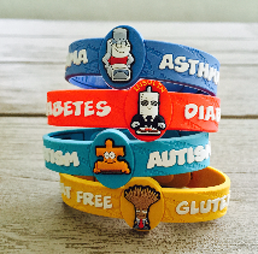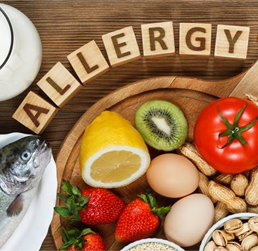
Understanding Treatment Options With Dr. Petrizzo
This week, we asked Dr. Marie Cavuoto Petrizzo who specializes in allergy, asthma and clinical immunology, to guest blog for us to help us understand allergy treatment options. Here are her thoughts on available treatments:
Food allergies are a growing public health concern. As many as 15 million people and 8% of children have food allergies. According to a study released in 2013 by the Centers for Disease Control and Prevention, food allergies among children increased approximately 50% between 1997 and 2011! The most common food allergens are milk, egg, soy, wheat, peanut, tree nuts, fish/shellfish and sesame, also known as the top 8 allergens.
To date, the only treatment plan for kids with food allergies is to strictly avoid their allergies, however accidental ingestion inevitably occurs, despite best intentions. Over 200,000 patients are sent to the emergency department each year for food allergy reactions, and that does not include the many more reactions treated at home or in physicians’ offices. Many studies are underway to investigate potential treatments and cures for food allergies, but perhaps the most talked about treatment involves food allergen desensitization.
Desensitization to food allergens is a novel, exciting, therapy, and one not without risk. Desensitization involves the introduction of known food allergens in a controlled manner. Gradually, the amount of food allergen a patient is exposed to increases until eventually the food allergic patient can tolerate the food without experiencing a reaction. Desensitization, however, is never permanent, and a patient who has been successfully desensitized to a food allergen would need to continue regular ingestion of the food in order to prevent the future development of a reaction. Clinical trials of food allergen desensitization are being conducted at major medical centers nationwide. The trials differ in terms of route of exposure, the doses of food allergen ingested, and time period necessary to reach desensitization.
Epicutaneous immunotherapy (EPIT) is one of the methods of desensitization currently being studied with trials underway for milk, egg and peanut allergens. During epicutaneous desensitization, tiny amounts of food allergens are placed on the top layer of the skin via a self-adhesive patch with increased amounts over time. Patients are even able to place the patches at home, which is quite convenient. Because the allergen does not enter the bloodstream, and is not ingested, EPIT has been well tolerated in patients being tested. To date, studies have demonstrated a reduction in the body’s response to a food allergen and thus EPIT is an encouraging therapy for the prevention of food allergy reactions.
Oral immunotherapy (OIT) is a second desensitization method being investigated by researchers. OIT involves the ingestion of slowly increasing concentrations of a food allergen (prepared commercially in the form of a powder). OIT has shown to be effective in desensitizing a majority of patients however unfavorable reactions are frequent during therapy. While most allergic reactions occurring during therapy are mild, approximately 5% have been serious. Overall, OIT therapy outcomes are positive, however researchers still need to understand what is the most effective and safest dosing schedule for patients.
Sublingual Immunotherapy (SLIT) is a desensitization method similar to oral immunotherapy. However, instead of the food allergen being ingested, the allergen is placed under the tongue in solution or tablet form. SLIT has resulted in fewer serious reactions during treatment, however the benefits and success rates are not as good as oral immunotherapy to date.
While many patients, and parents of food allergic children are desperate to find a treatment and cure for food allergies, the science is still evolving. Safety must remain a top concern when physicians and scientists develop treatment protocols. Additionally, a better understanding of the long time efficacy and the tolerability of treatment must occur before these treatments become mainstream. While clinical trials for food allergens immunotherapy are promising, the current protocols cannot yet be recommended for routine practice.






